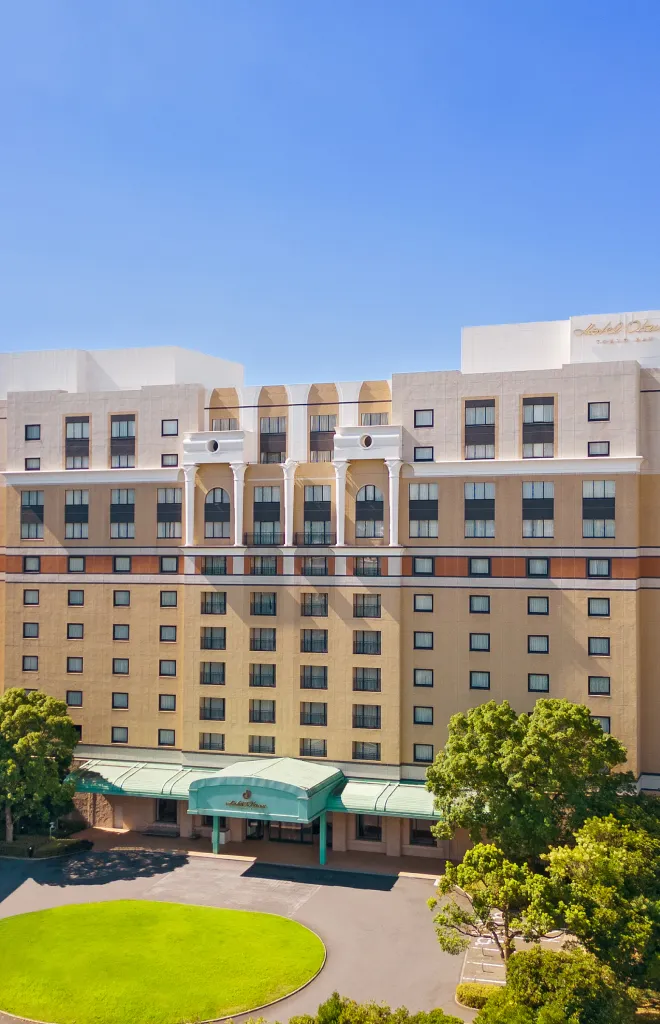ARCHITECTURAL
CHARM

The Encounter of Sea and Land
~The tale of our edifice~
Prologue
Hotel Okura Tokyo Bay has a solemn, delicate presence.
The building, which has a distinctive atmosphere not found in the vicinity, was designed and built based on the design concept of “a natural flow from sea to land”. Ornaments that allude to the sea and the land are placed throughout the building, serving as symbolic installations that make the space stand out even more.
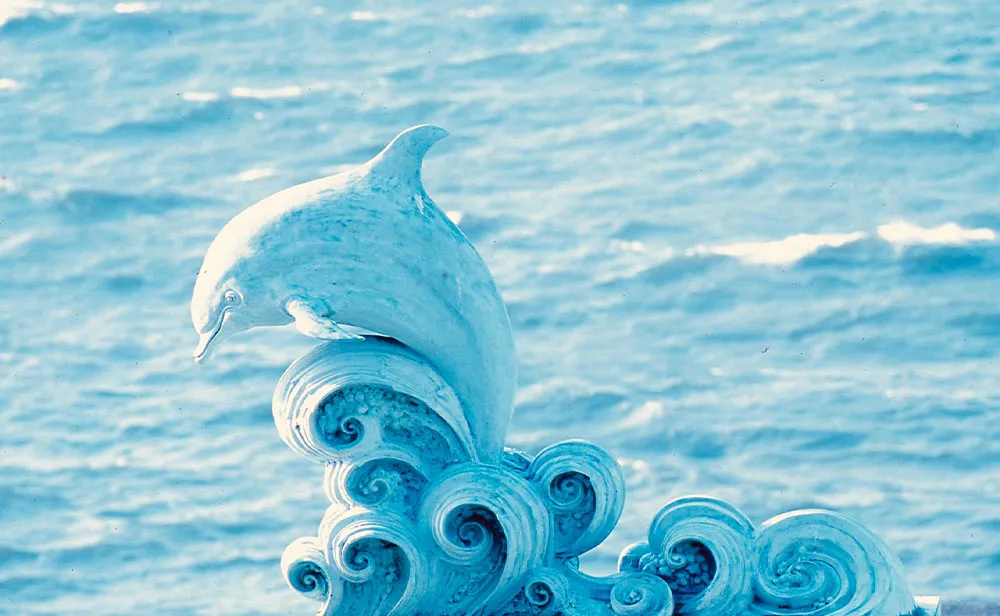
Sculpture of dolphins
〈The Link Between Sea and Land〉
The sculpture of dolphins symbolizes the link between the sea and the land. The leisurely swimming and leaping forms of the dolphins are both charming and courageous, dynamically depicting their arrival from Tokyo Bay.
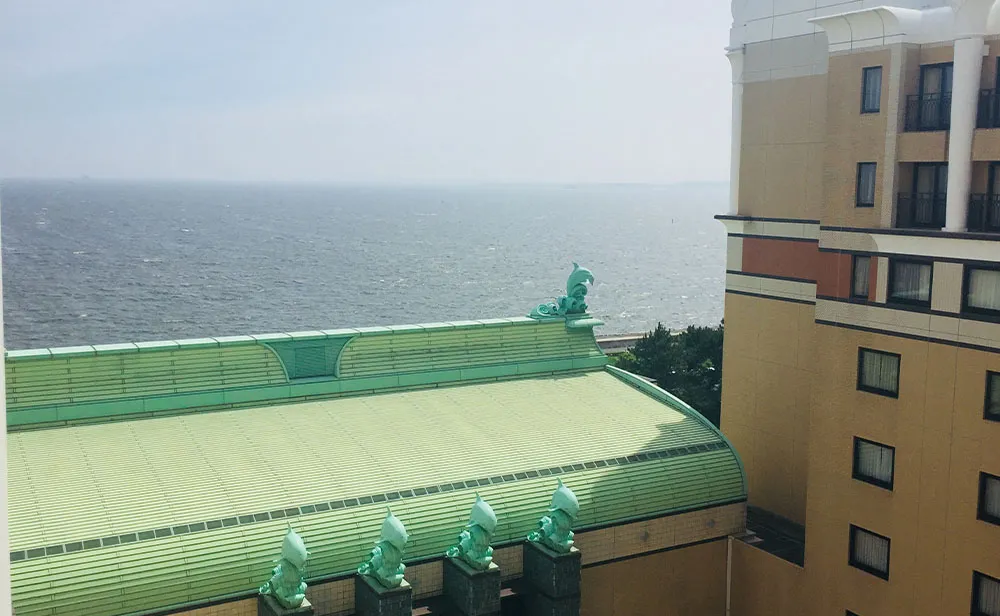
Roof〈Big Wave〉
The roof of the low-rise building (banquet wing) built on the Tokyo Bay side depicts a big wave with dolphins swimming above it. Architectural techniques are skillfully incorporated into the building to evoke the ripples of the waves that travel in from Tokyo Bay.
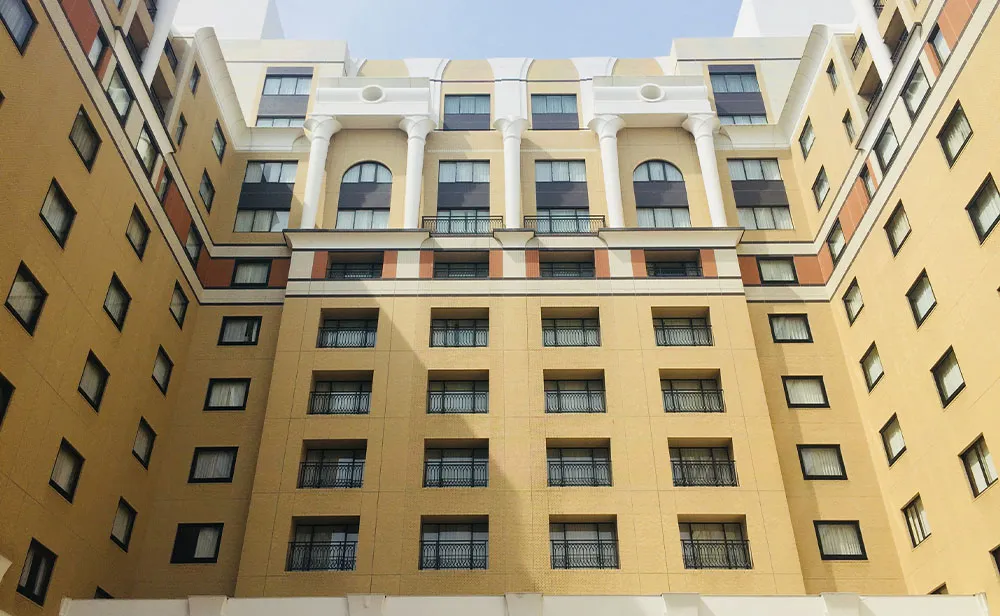
Edifice〈Cliff and Strata〉
The guest room wing, which is built in the shape of a U, represents a cliff. The gradation of the exterior walls and tiles represents geological strata, evoking the relationship between the sea and the land that has been built across a long period of time.
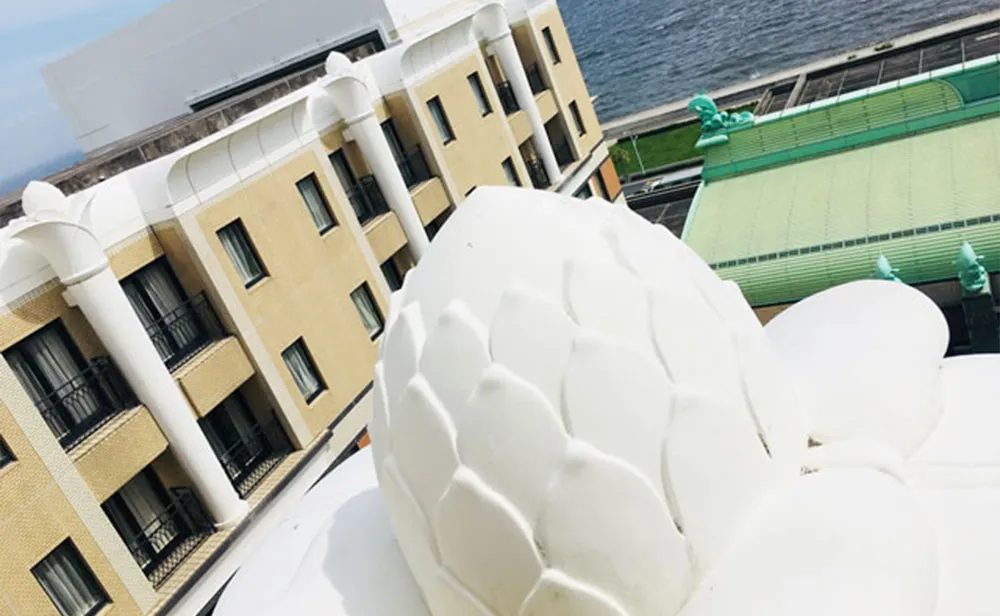
Capital
〈The Breath of Life〉
The walls of the guest room wing, which represent cliffs, are decorated with giant floral “column ornaments” to represent vegetation that fight hard to survive in harsh environments.
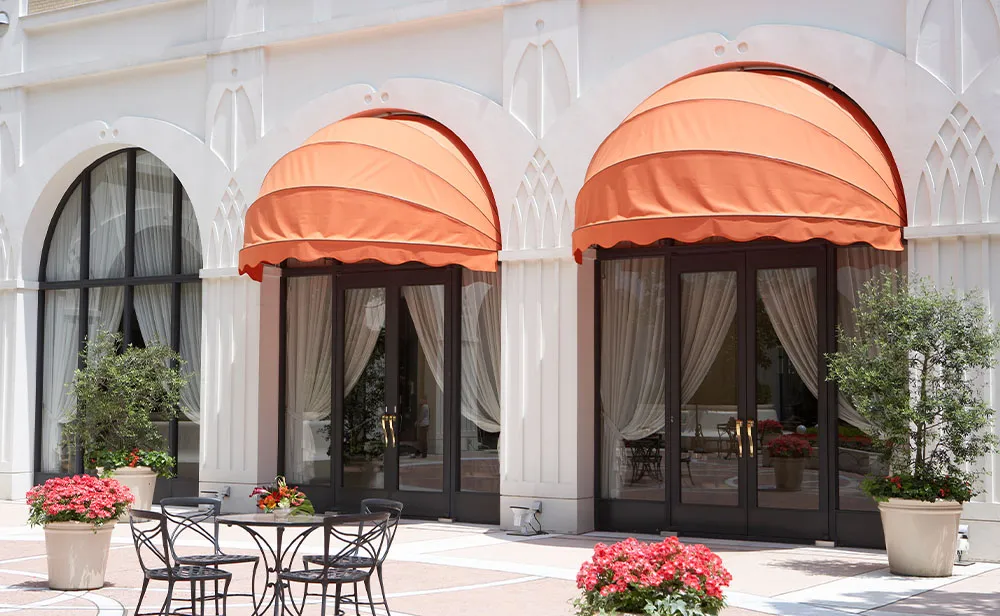
Courtyard
Themed around the concept of “the encounter of sea and land”, the courtyard, which is located in the center of the hotel grounds, serves as a place for guests to gather and interact with each other. The arcade’s arches are decorated with “plant leaf sheaths”, whose flourishing blooms foreshadow the giant column ornaments above the guest room wing.
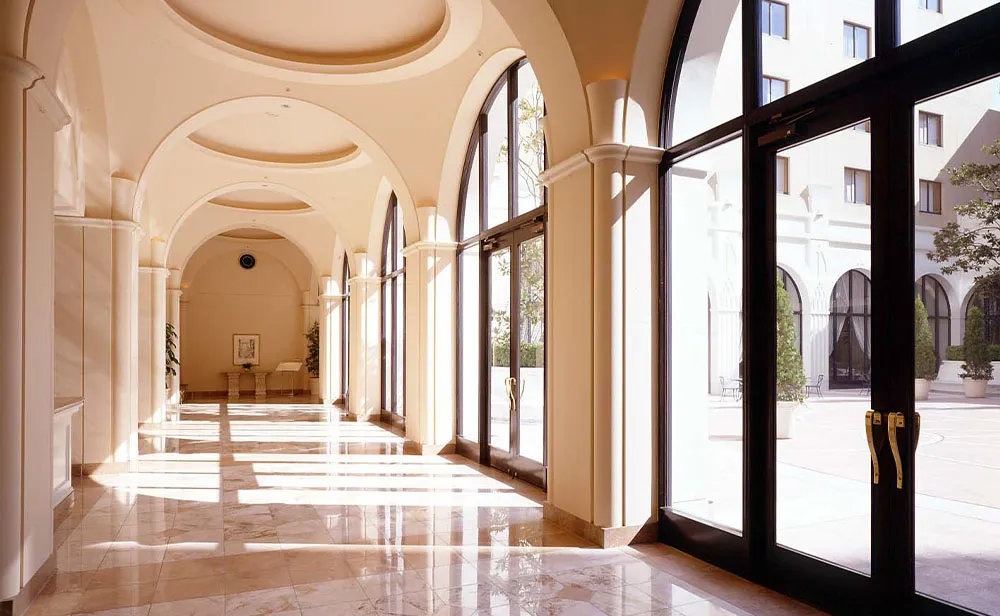
Cloister
The cloister is a colonnaded walkway that surrounds the courtyard. Guests can feel the arrival of the dolphins and the breathe of life in this sun-drenched cloister.
Epilogue
In the 1980s, the architectural industry experience a shift from contemporary modernism to postmodernism. Postmodern architecture refers to buildings decorated with superficial ornaments that emerged in contrast to the rational, functionalist architecture of contemporary modernism. The ornaments that characterize this hotel are not superficial decorations, but instead symbolic installations that play an indispensable role in conveying the design concept — “a natural flow from sea to land”. The dolphin sculpture that adorns the gatepost alludes to this concept. As guests make their way into the center of the hotel grounds, the significance of the dolphins’ presence deepens further. Long after its construction, the hotel still retains its unique qualities and clearly differentiates itself from the surrounding buildings.
